东风标致轿车前独立悬架设计及优化(含CAD零件装配图,CATIA三维图)
无需注册登录,支付后按照提示操作即可获取该资料.
东风标致轿车前独立悬架设计及优化(含CAD零件装配图,CATIA三维图)(任务书,开题报告,文献摘要,外文翻译,论文说明书10600字,CAD图6张,CATIA三维图)
摘要
汽车的平顺性和操纵稳定性是决定汽车舒适度的重要性能,悬架作为汽车底盘的重要组成部分,对此有很大的影响。本文依据东风标致508相关技术参数,参考相关文献,对该轿车前独立悬架(麦弗逊式)进行了分析与设计,重点考虑了悬架的弹性特性,螺旋弹簧,减振器,横向稳定杆,半轴等。基于Adams建立三维模型并进行动力学仿真,分析悬架硬点对车轮定位参数的影响并优化了车轮定位参数,对优化后的悬架进行Catia三维建模并导出二维工程图。本文的优化设计方法能够找出悬架各参数在运动过程中的变化规律,有助于缩短产品开发周期,节约成本,是一种值得参考的优化设计方法。
关键词:Adams;麦弗逊悬架;Catia建模;运动仿真,优化
Abstract
The ride comfort and handling stability of automobiles are important properties that determine the comfort of automobiles, and suspension, as an important component of automobile chassis, has a great influence on this. According to the relevant technical parameters of Dongfeng Peugeot 508 and related literatures, this paper analyzes and designs the front independent suspension ( McPherson type ) of this car, focusing on the elastic characteristics of the suspension, coil springs, shock absorbers, stabilizer bars, axle shafts, etc. Based on ADAMS, a three-dimensional model is established and dynamic simulation is carried out, the influence of suspension hard points on wheel alignment parameters is analyzed and the wheel alignment parameters are optimized, and CATIA three-dimensional modeling is carried out on the optimized suspension and a two-dimensional engineering drawing is derived. The optimal design method in this paper can find out the changing rules of suspension parameters in the process of movement, which helps to shorten the product development cycle and save costs, and is a kind of optimization design method worthy of reference.
Key Words:Adams ; McPherson suspension ; CATIA modeling ; motion simulation ; optimizatio
主要参数的确定
本次设计主要是根据东风标致508 DC7167TSAB车型前悬架来进行的,具体车型参数配置如表3.1。
表3.1 东风标致508 DC7167TSAB整体尺寸数据表
参数名称 参数值
轴距 2815mm
车身长/宽/高 4826mm/1855mm/1465mm
前轮距 1581mm
后轮距 1554mm
整车整备质量 1565kg
前轴轴载质量 952kg
前轴最大轴载质量 1083kg
轮胎规格 225/60R17
悬架系统 前:麦弗逊独立前悬架
最大总质量 1989kg
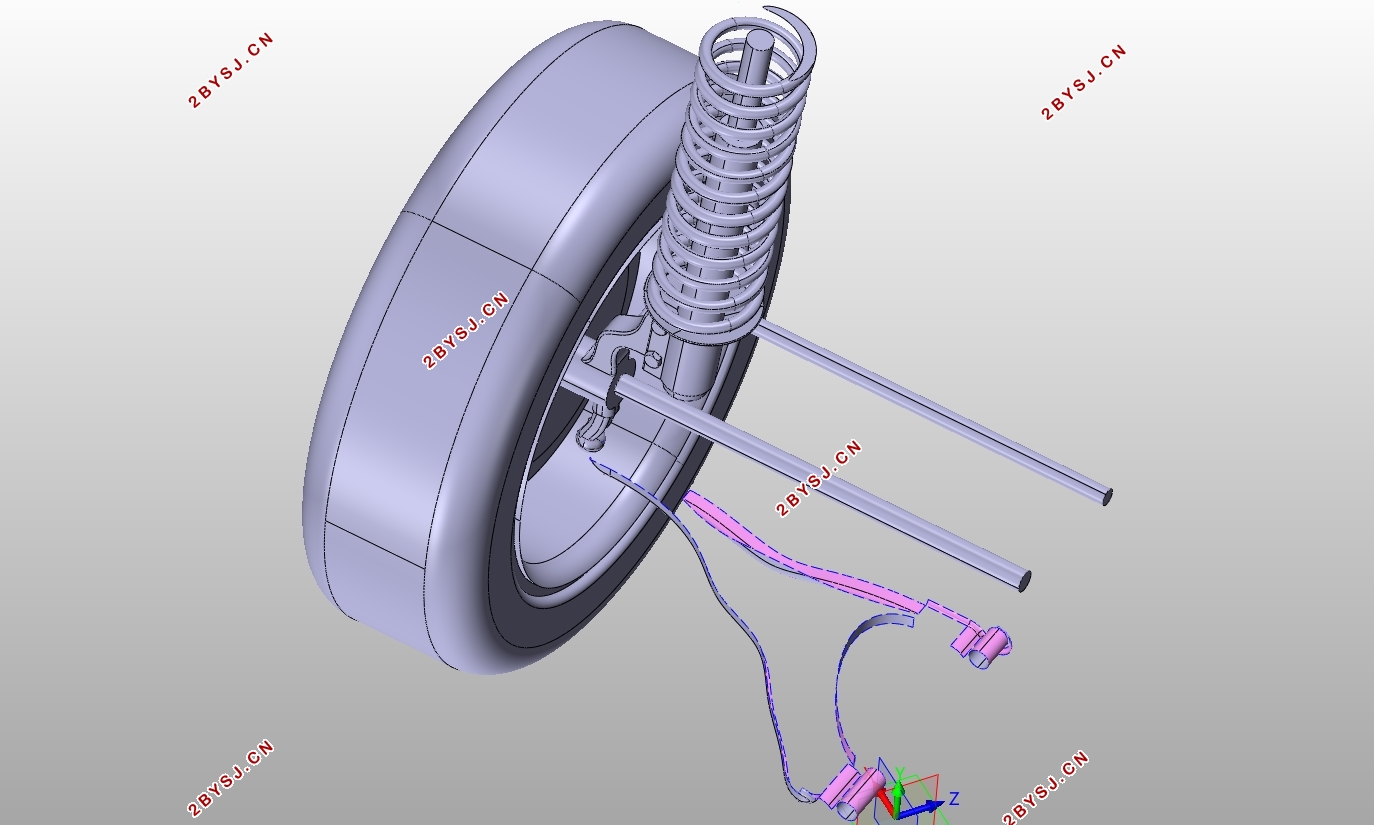
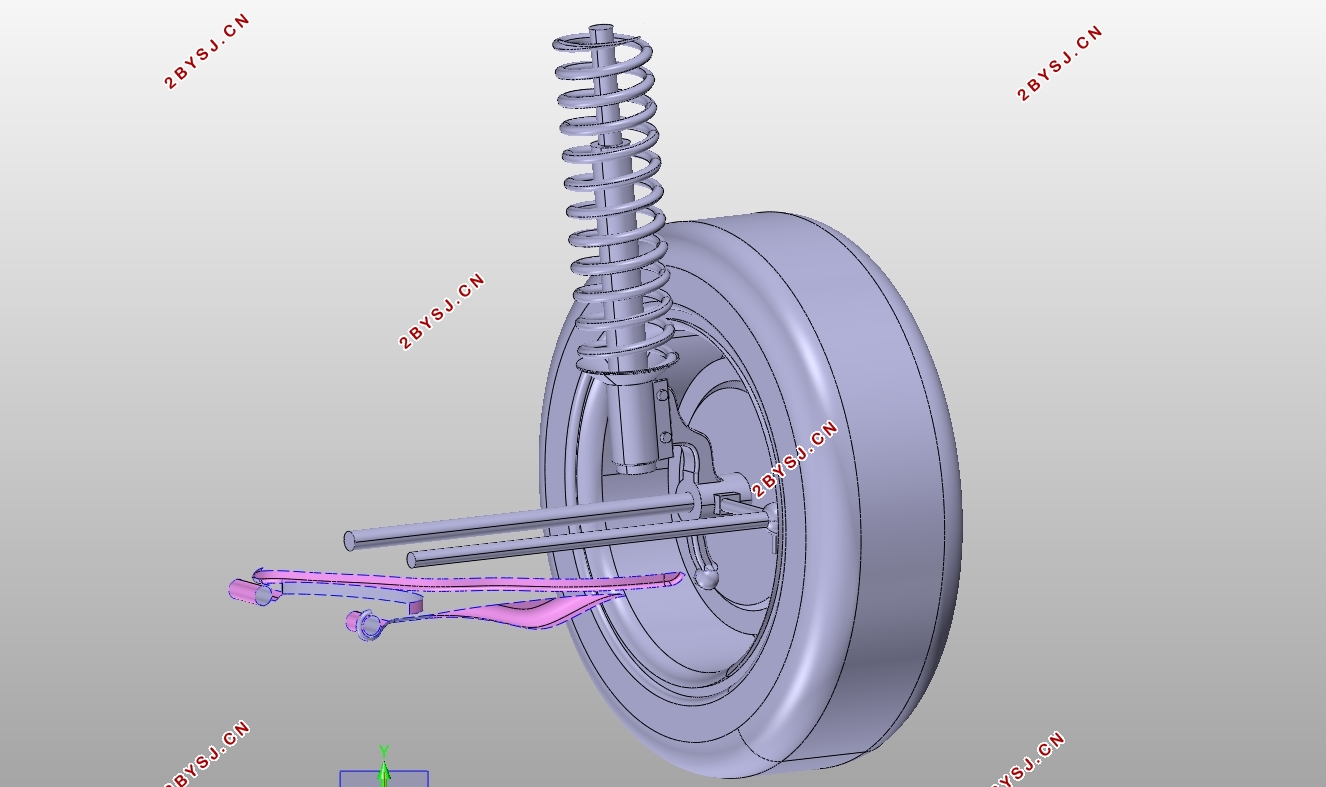
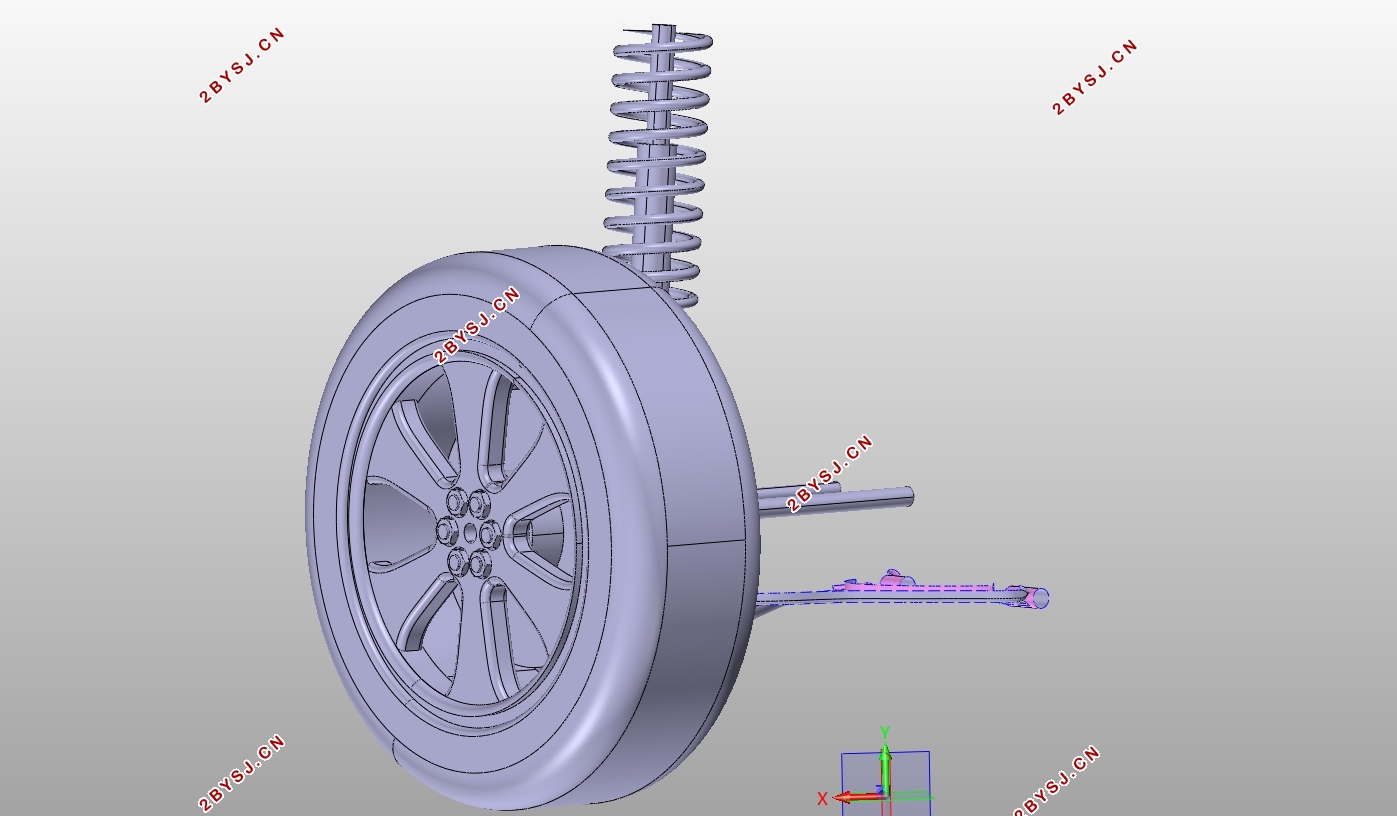
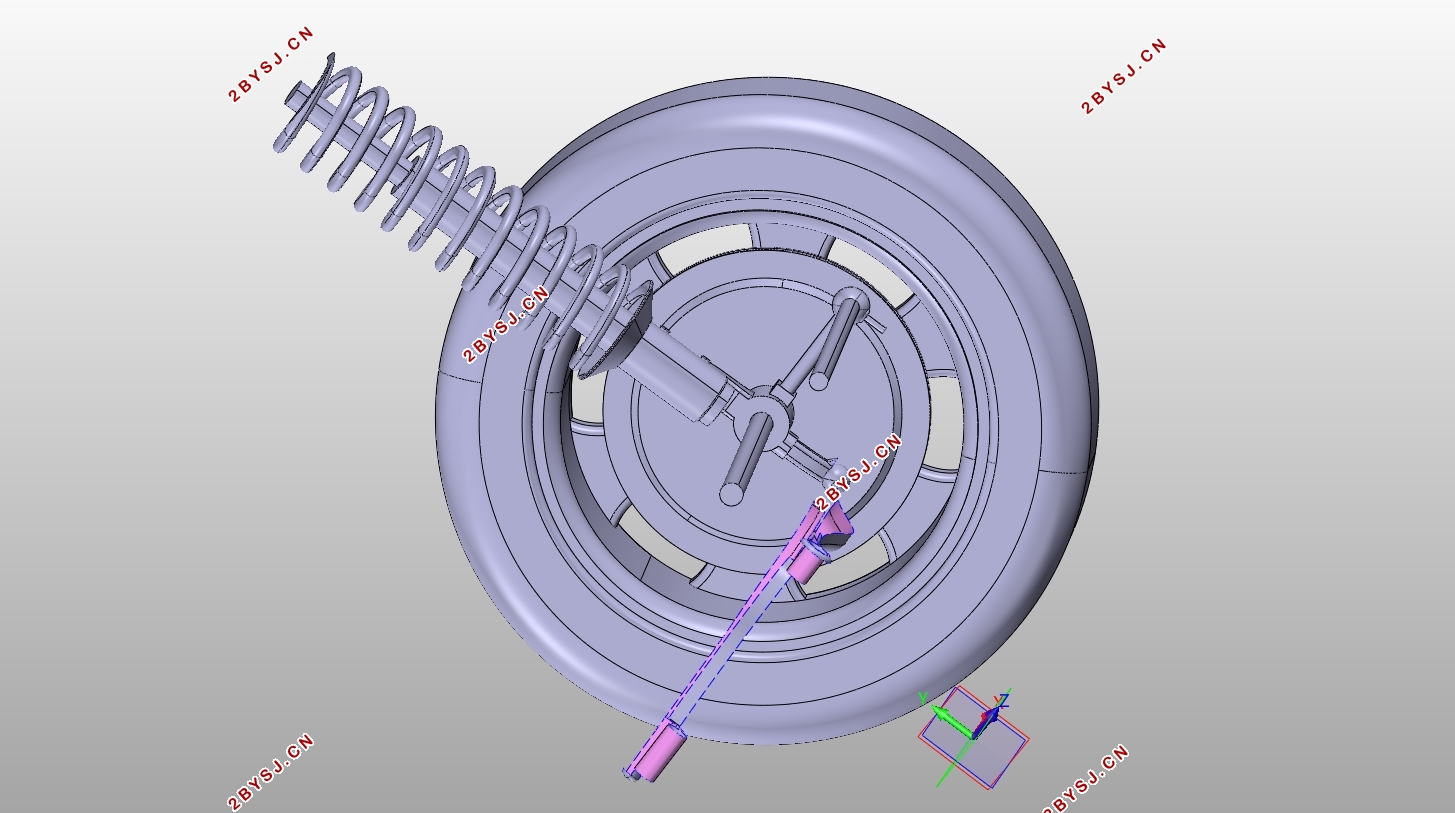
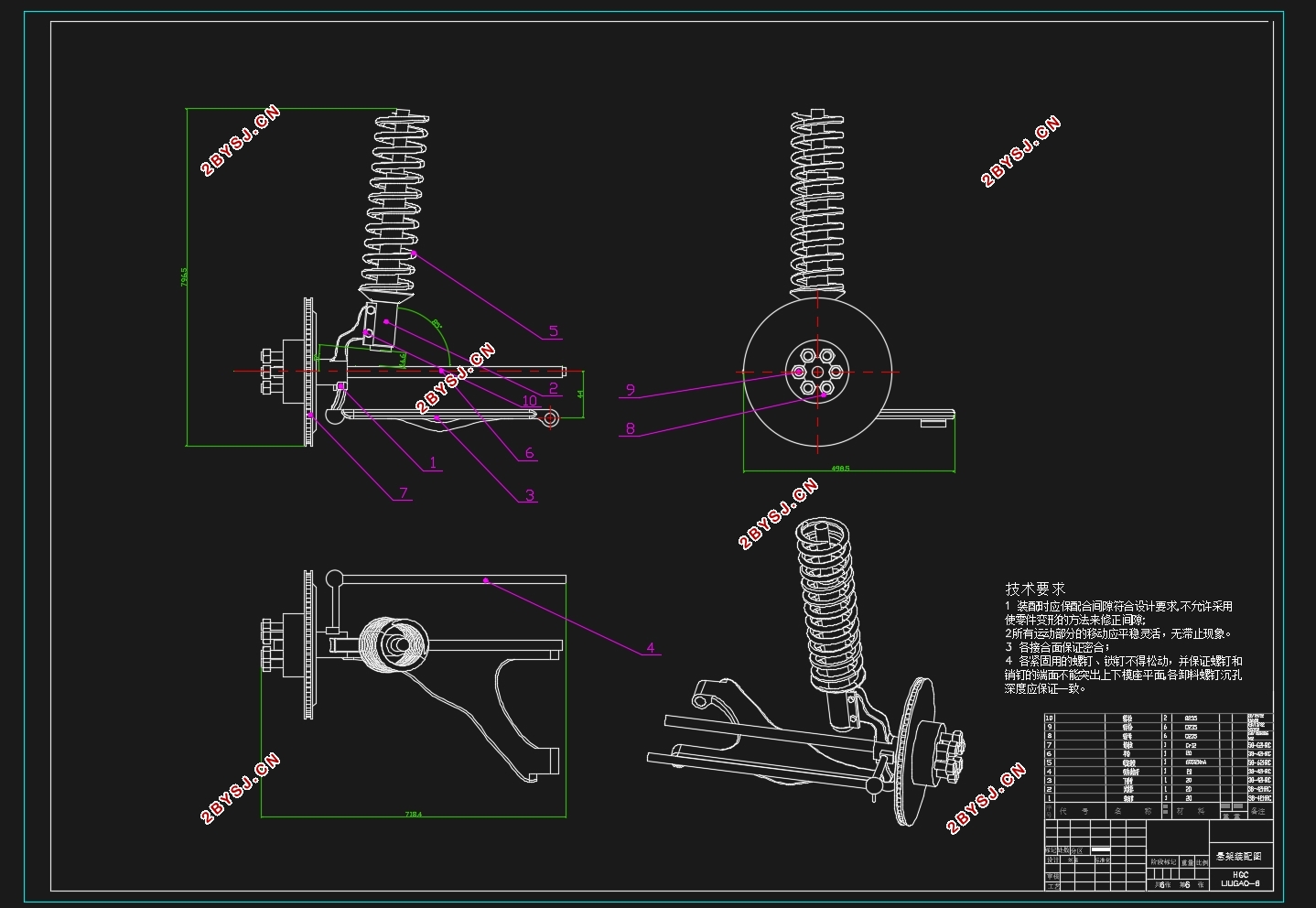
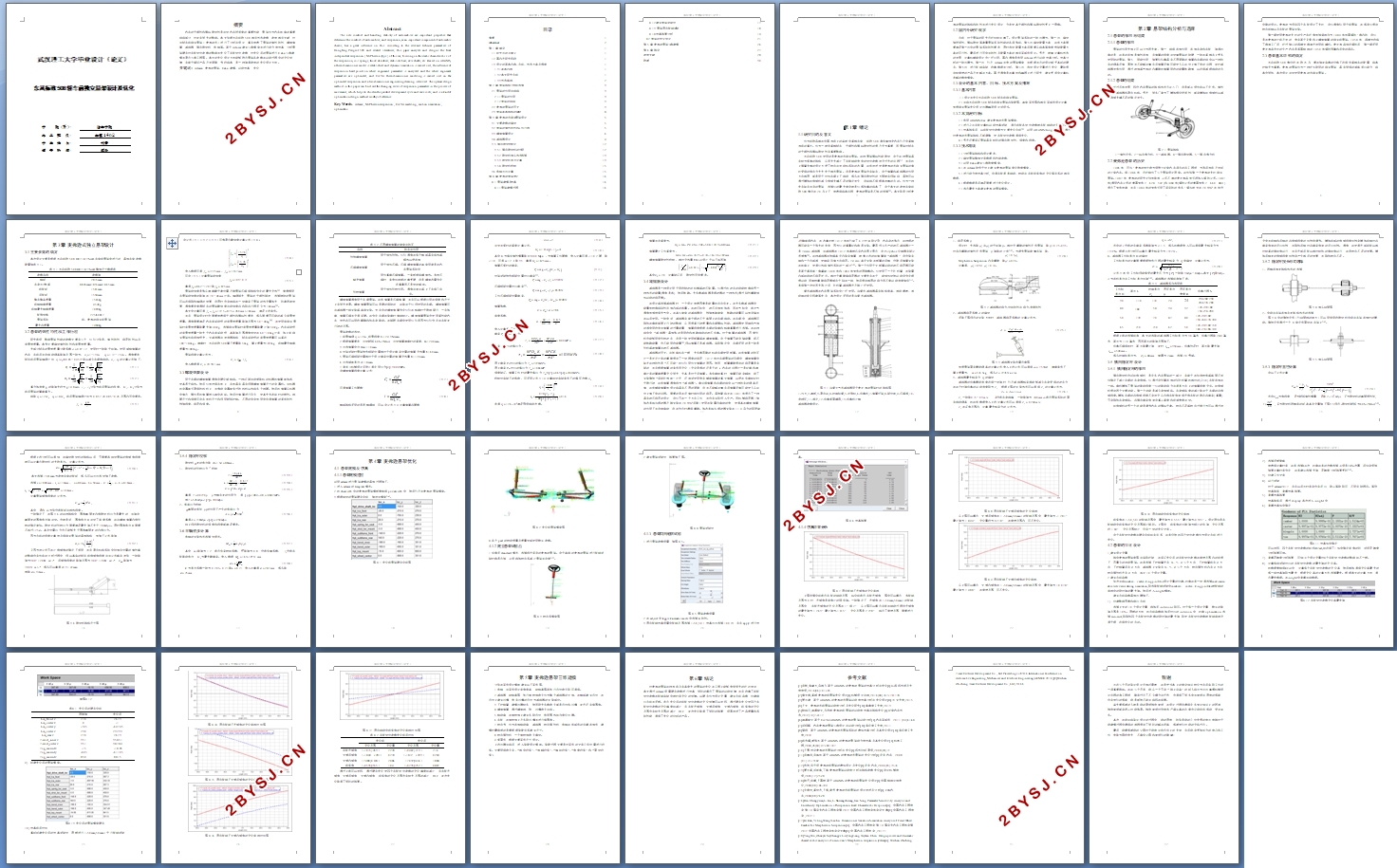


目录
摘要 1
Abstract 2
第1章 绪论 1
1.1研究目的及意义 1
1.2国内外研究现状 1
1.3设计的基本内容、目标、技术方案及措施 1
1.3.1基本内容 1
1.3.2本文研究目标 1
1.3.3技术路线 2
第2章 悬架结构分析与选择 3
2.1悬架的作用与组成 3
2.1.1悬架的作用 3
2.1.2悬架的组成 3
2.2麦弗逊悬架的历史 3
2.3悬架基本结构的确定 4
第3章 麦弗逊式独立悬架设计 5
3.1主要参数的确定 5
3.2悬架的弹性特性和工作行程 5
3.3螺旋弹簧设计 6
3.4减振器设计 9
3.5 横向稳定杆设计 12
3.5.1 横向稳定杆的作用 12
3.5.2 稳定杆接头形式选择 13
3.5.3 稳定杆直径计算 13
3.5.4 稳定杆校核 15
3.6半轴初步计算 15
第4章 麦弗逊悬架优化 16
4.1 悬架建模及仿真 16
4.1.1悬架建模过程 16
4.1.2建立悬架试验台 17
4.1.3 悬架同向轮跳试验 18
4.1.4仿真结果分析 19
4.2悬架的优化设计 21
第5章 麦弗逊悬架三维建模 26
第6章 结论 27
参考文献 28
致谢 30
